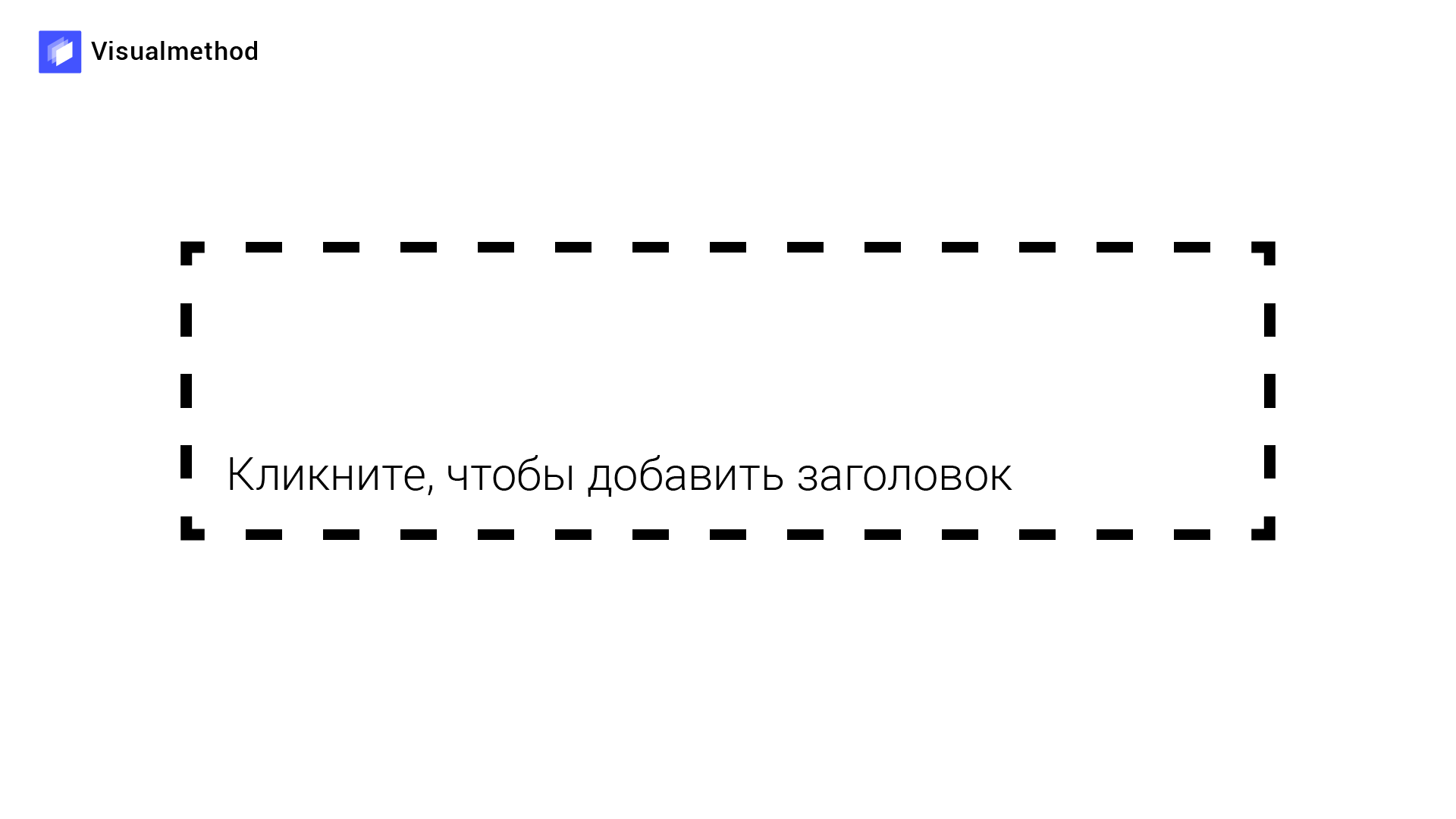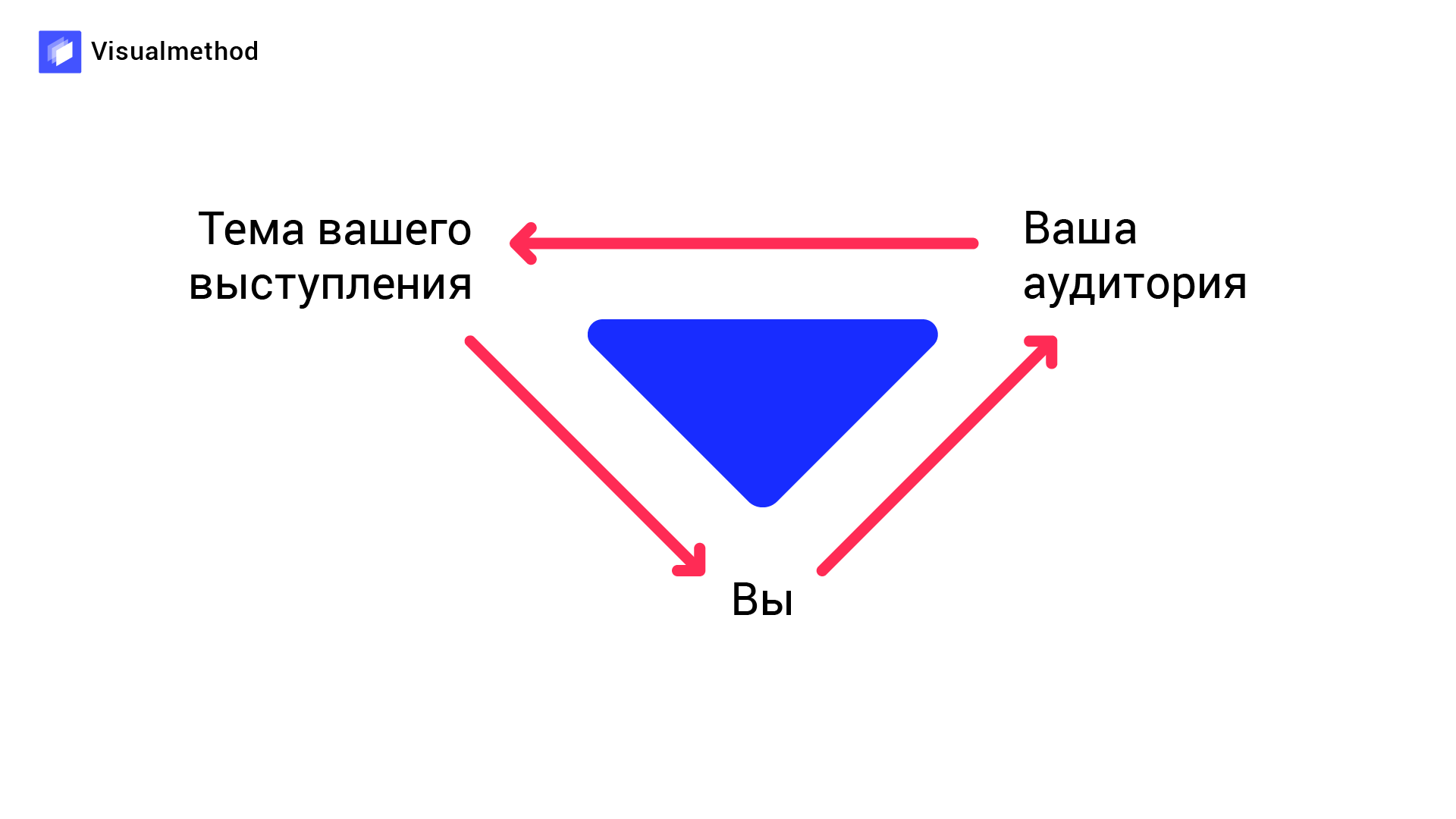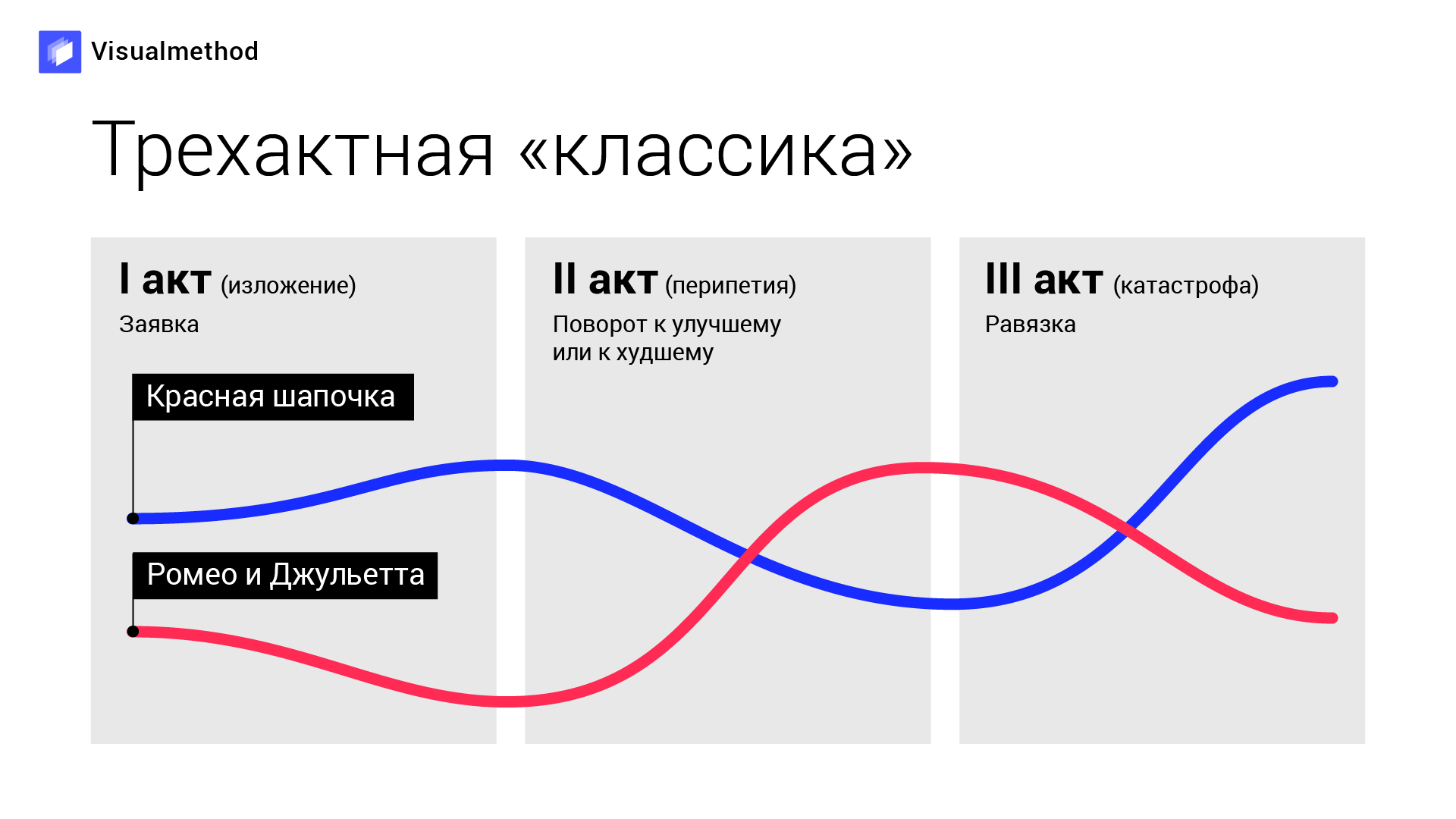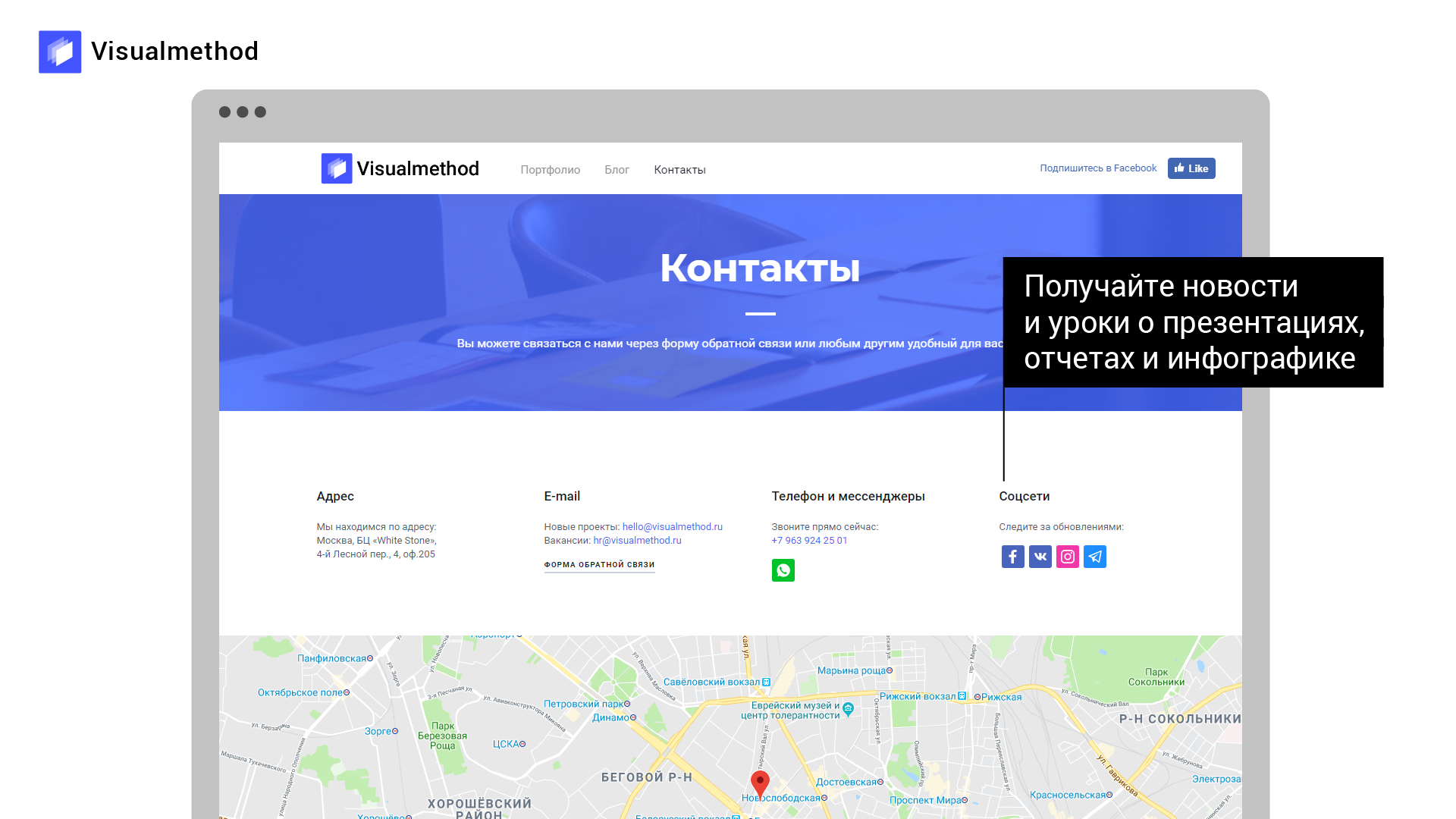5 slides that experienced presenters ignore
A high-profile brand or high-profile speaker’s name helps fill conference rooms. People are drawn to the “stars” to be in trend and learn about their mistakes and victories. Only at the end of the speeches, the participants give such speakers far from the highest marks.
In the presentation and infographic creation studio, VisualMethod was found out by entrepreneurs and corporate employees, which most of all disappointed them in reports at conferences. It turned out that when experienced speakers ignore organizational slides and go straight to the description of the process or case, trust is lost. Some respondents even called such behavior of the speakers arrogant (“did not introduce himself at all”) and inattentive (“one thing in the subject, but another in words”). We talk in detail about which slides are important to remember.

Even if you have performed 1000 times, these 5 slides in your presentation must be:
If the presentation involves a block of answers to questions, make a separate slide for this to focus the audience or use the slide with the results of the presentation.
Accumulating the experience of the speakers, the speakers concentrate more on the essence of the presentation, believing that only the results and personal experience of the speaker are important to the audience. Of course, this is significant, but regardless of your status and results of the work, it is valuable for the audience to receive reinforcement of the importance of what is happening and a sense of ownership. Organizational slides help you tune into your wave, dive into the topic and understand why your presentation should affect the professional life of the audience. Even if your speech is a monologue, organizational information creates the effect of interaction between the speaker and the audience in the hall.
Any presentation begins with a title page. Usually something common is written on it, although initially the first slide was created to explain the relevance of the topic to the audience. Why it happens? Our clients, who often speak, admit that they get the topic from the organizer or, if they formulate it themselves, this happens a few months before the event and in the absence of time, a draft theme appears. Over time, she appears on all posters, banners and newsletters, and when it comes to preparation, it seems like it's too late to change something. VisualMethod always proposes to formulate a topic with its benefits to the audience. Even if it will be slightly different from the announced one. So you can capture the attention of people from the first seconds.
Use the active voice to formulate the topic and be as specific as possible. For example, the phrase “Developing a commercial proposal” sounds weaker than “3 templates of a commercial proposal that will help you sell consulting services.”
Find a common interest with the listener. Before a speech, a good speaker will ask the organizers who will be in the hall and what the results of surveys on topics that are relevant among visitors. Such a conversation takes five minutes, but it helps to save time on preparation, because you will definitely know people's expectations and pick up interesting information for them. If you make a single presentation during the year, you can connect your topic and the interests of those present with just one proposal.
Even when there is no information about those who will be in the hall, it is enough to ask 2-3 clarifying questions about the occupation of students and pick up an argument why your information will be useful to them before the start of the speech.

After you have formulated the topic, people have the following question: why you can be an expert and why you should trust? This reaction occurs automatically and, without receiving an answer, the listener can listen to everything with interest, but he will have doubts that in this particular case the information is trustworthy and it should be put into practice. Therefore, we recommend that even “star” speakers tell why they have the right to voice this or that information. How to do this naturally without protruding “I”?
Some event formats provide that the speaker is represented by the organizer. In this case, it is important to give the facilitator the correct information and relate it to the topic of your presentation. For example, we advised one of our clients at a conference for entrepreneurs to talk not only about the last job in the largest company in the country, but also about previous experience in a small office. After the speech, the speaker received a comment that he understands the problems of small business, although earlier in the block of “questions and answers” the question was often asked “well, this methodology works in big business, but what about small?”. When you clearly understand who your audience is, you can pick up examples from your work that will resonate with the interests of the audience.
If you are presenting yourself, devote a separate slide to this. So you can only voice the connection of your experience and topic, and people will read other facts themselves - and you will not look like showing off. There is such a thing as a “triangle of trust.” To build trust, you need to link three aspects: your experience, topic, and audience interests.

The first option, how this can be done, involves the use of a stereotype. It looks like this:
My name is _______, I am _______ (Position): stereotype _______________. If you are a sales manager, your presentation may look like this:
My name is Peter Brodsky (name), I am a typical commercial director (position), who approves several commercial offers per month and receives feedback from customers (stereotype). Thus, you confirm that you have the right to talk about drawing up commercial offers and understand what people in the audience are doing if you are speaking to people with the same position.
The second option is previous experience. If you spoke to developers who, for example, create services to automate the distribution of commercial offers, you could say the following:
My name is Pyotr Brodsky (name), and every day I spend 30% of my time in the development team, because I believe that the future lies in process automation. If you have experience in development, then you can say even brighter: I am a developer and always was. The code is in my blood. But it so happened that I managed to build an algorithm for working with commercial offers and increase sales by 999%, and now I work as a block manager. This is also good, because I see both sides of the process.
If you do not have relevant experience, then you can go to the language of emotions and say why the topic is important to you. It will sound something like this: I myself am a buyer every day and am ready to cry with happiness when the seller hears what I need and does not try to sell according to the template. But this is the essence of the template of a good company: to teach employees to use the advantages of humanity and technology for understanding the client.
As for the slide describing the experience, then you can put the following information on it:
The main thing: in time, remember that the audience did not come to listen to your life story. Therefore, the purpose of the presentation is only to justify why it is important for people to hear your presentation on this topic.
So you told me why the topic and your expertise deserve attention, now the audience wants to know how you will transfer knowledge, what the process will be. It is important to indicate the content of the presentation on the slide and set the agenda for the meeting in order to avoid disappointment after your presentation. When you do not warn about the structure of your speech, people themselves form an expectation and it rarely coincides with reality. From here comments appear in the style of “not talking about that at all” or “I thought it would be better”. Help students with their desires and expectations - set the rules and tell them what to expect.
A good way to talk about the agenda without calling the “Agenda” slide. Instead, you can create a timeline or infographic. Designate how much time each part will take: theoretical, practical, case, answers to questions, breaks, if provided. If you will forward the presentation, then the content is better done in the form of a menu with links - this way you take care of the reader and save his time browsing through the slides.
VisualMethod recommends not only to indicate the content of the presentation, but to do so through the benefit of the audience. For example, on the slide there is an item “how to indicate budget boundaries in a commercial proposal”. When voicing this paragraph, make a promise: “After my speech, you will know how to indicate the boundaries of the budget in a commercial proposal.” Make sure people find your words useful to themselves.
As Alexander Mitta notes in his book “Cinema Between Hell and Paradise”, the first 20 minutes of the film provoke a flash of interest in the whole story. Professionals call this the Inciting event or in the approximate translation “inducing event”. A similar approach exists in the theater classics. Your introductory slides are the eyeballs and give rise to interest in the whole story.

Remember the denouement at the end of the film or the production: the moment when the viewer is illuminated and he receives universal knowledge. That moment in your presentation will be the final slide with brief conclusions. This can be one result, written in large, if you are talking about a truly new discovery, or 3 main rules or conclusions to summarize the entire presentation.
Why summarize on a separate slide? Firstly, you help to make an unambiguous and correct conclusion based on the results of your presentation. Secondly, you prepare the audience for the final presentation and give the opportunity to prepare questions.
Thirdly, you can add value to your performance. To do this, you need to focus on the fact that thanks to your performance, the audience has learned something, realized and understood. In general, create an effect of added value. For example, you list the names of the three templates that are used to build a proposal, and say: today you learned these three models, and using them you can more clearly show your customers the benefits of working with you and speed up sales.
The final slide should be concise and truly concise. You should not continue further immersion in the topic after it, even if you recall some details. Use this moment to consolidate your expert status and final conclusion. What you can go to at this final point is a block of answers to questions, although in most cases it is better to put it a little earlier and end the presentation on the note you need.

Any presentation has a purpose. Going on stage, the speaker sells to the audience a product, company, his expertise, or some action. Today it’s rare to see direct sales through presentations, except in the network of pyramids of cosmetics or magic pills. In most cases, the speaker collects contacts from the audience. This does not mean that he walks with the questionnaire around the hall, but he says where you can continue communication.
If you are not ready to give direct contacts, then indicate on the closing slide the e-mail of the company. For example, we use the general address hello@visualmethod.ru, and even better, give a link to a social network where you can communicate with the audience or where useful materials appear on your topic.
If you are an independent consultant, you can also give a general, personal address or indicate a page on the social network through which you can be contacted.
To energize your audience, make a “call to action”. Ask for feedback on your presentation, share links on the topic, or suggest how you can improve your presentation. As the practice of VisualMethod shows, about 10% of listeners are always responsive and active enough to leave a comment, and about 30% are ready to subscribe to the news of your group.

According to the “ancient” tradition, there should have been a mention of the phrase “Thank you for your attention!”. Saying goodbye is always difficult and you want to fill out an awkward pause with a slide with similar gratitude, but we urge you to stop on the contacts slide. “Thank you slide” gives the audience a signal that your relationship is over, and the goal of any business is to expand and constantly maintain contact with your audience. Your contacts will cope better with this task.
In the presentation and infographic creation studio, VisualMethod was found out by entrepreneurs and corporate employees, which most of all disappointed them in reports at conferences. It turned out that when experienced speakers ignore organizational slides and go straight to the description of the process or case, trust is lost. Some respondents even called such behavior of the speakers arrogant (“did not introduce himself at all”) and inattentive (“one thing in the subject, but another in words”). We talk in detail about which slides are important to remember.

Why is it important
Even if you have performed 1000 times, these 5 slides in your presentation must be:
- topic of speech
- self-image
- performance structure
- agenda
- presentation results and contacts
If the presentation involves a block of answers to questions, make a separate slide for this to focus the audience or use the slide with the results of the presentation.
Accumulating the experience of the speakers, the speakers concentrate more on the essence of the presentation, believing that only the results and personal experience of the speaker are important to the audience. Of course, this is significant, but regardless of your status and results of the work, it is valuable for the audience to receive reinforcement of the importance of what is happening and a sense of ownership. Organizational slides help you tune into your wave, dive into the topic and understand why your presentation should affect the professional life of the audience. Even if your speech is a monologue, organizational information creates the effect of interaction between the speaker and the audience in the hall.
Hook on the topic
Any presentation begins with a title page. Usually something common is written on it, although initially the first slide was created to explain the relevance of the topic to the audience. Why it happens? Our clients, who often speak, admit that they get the topic from the organizer or, if they formulate it themselves, this happens a few months before the event and in the absence of time, a draft theme appears. Over time, she appears on all posters, banners and newsletters, and when it comes to preparation, it seems like it's too late to change something. VisualMethod always proposes to formulate a topic with its benefits to the audience. Even if it will be slightly different from the announced one. So you can capture the attention of people from the first seconds.
Use the active voice to formulate the topic and be as specific as possible. For example, the phrase “Developing a commercial proposal” sounds weaker than “3 templates of a commercial proposal that will help you sell consulting services.”
Find a common interest with the listener. Before a speech, a good speaker will ask the organizers who will be in the hall and what the results of surveys on topics that are relevant among visitors. Such a conversation takes five minutes, but it helps to save time on preparation, because you will definitely know people's expectations and pick up interesting information for them. If you make a single presentation during the year, you can connect your topic and the interests of those present with just one proposal.
Even when there is no information about those who will be in the hall, it is enough to ask 2-3 clarifying questions about the occupation of students and pick up an argument why your information will be useful to them before the start of the speech.

Support your expertise
After you have formulated the topic, people have the following question: why you can be an expert and why you should trust? This reaction occurs automatically and, without receiving an answer, the listener can listen to everything with interest, but he will have doubts that in this particular case the information is trustworthy and it should be put into practice. Therefore, we recommend that even “star” speakers tell why they have the right to voice this or that information. How to do this naturally without protruding “I”?
Some event formats provide that the speaker is represented by the organizer. In this case, it is important to give the facilitator the correct information and relate it to the topic of your presentation. For example, we advised one of our clients at a conference for entrepreneurs to talk not only about the last job in the largest company in the country, but also about previous experience in a small office. After the speech, the speaker received a comment that he understands the problems of small business, although earlier in the block of “questions and answers” the question was often asked “well, this methodology works in big business, but what about small?”. When you clearly understand who your audience is, you can pick up examples from your work that will resonate with the interests of the audience.
If you are presenting yourself, devote a separate slide to this. So you can only voice the connection of your experience and topic, and people will read other facts themselves - and you will not look like showing off. There is such a thing as a “triangle of trust.” To build trust, you need to link three aspects: your experience, topic, and audience interests.

The first option, how this can be done, involves the use of a stereotype. It looks like this:
My name is _______, I am _______ (Position): stereotype _______________. If you are a sales manager, your presentation may look like this:
My name is Peter Brodsky (name), I am a typical commercial director (position), who approves several commercial offers per month and receives feedback from customers (stereotype). Thus, you confirm that you have the right to talk about drawing up commercial offers and understand what people in the audience are doing if you are speaking to people with the same position.
The second option is previous experience. If you spoke to developers who, for example, create services to automate the distribution of commercial offers, you could say the following:
My name is Pyotr Brodsky (name), and every day I spend 30% of my time in the development team, because I believe that the future lies in process automation. If you have experience in development, then you can say even brighter: I am a developer and always was. The code is in my blood. But it so happened that I managed to build an algorithm for working with commercial offers and increase sales by 999%, and now I work as a block manager. This is also good, because I see both sides of the process.
If you do not have relevant experience, then you can go to the language of emotions and say why the topic is important to you. It will sound something like this: I myself am a buyer every day and am ready to cry with happiness when the seller hears what I need and does not try to sell according to the template. But this is the essence of the template of a good company: to teach employees to use the advantages of humanity and technology for understanding the client.
As for the slide describing the experience, then you can put the following information on it:
- Position and company names in which you worked
- Your education or special courses that relate to the topic
- Degrees, Awards and Certifications
- Quantitative results. For example, how many commercial offers you have made in your life.
- Sometimes it is appropriate to mention customers or large projects.
The main thing: in time, remember that the audience did not come to listen to your life story. Therefore, the purpose of the presentation is only to justify why it is important for people to hear your presentation on this topic.
Interested in content
So you told me why the topic and your expertise deserve attention, now the audience wants to know how you will transfer knowledge, what the process will be. It is important to indicate the content of the presentation on the slide and set the agenda for the meeting in order to avoid disappointment after your presentation. When you do not warn about the structure of your speech, people themselves form an expectation and it rarely coincides with reality. From here comments appear in the style of “not talking about that at all” or “I thought it would be better”. Help students with their desires and expectations - set the rules and tell them what to expect.
A good way to talk about the agenda without calling the “Agenda” slide. Instead, you can create a timeline or infographic. Designate how much time each part will take: theoretical, practical, case, answers to questions, breaks, if provided. If you will forward the presentation, then the content is better done in the form of a menu with links - this way you take care of the reader and save his time browsing through the slides.
VisualMethod recommends not only to indicate the content of the presentation, but to do so through the benefit of the audience. For example, on the slide there is an item “how to indicate budget boundaries in a commercial proposal”. When voicing this paragraph, make a promise: “After my speech, you will know how to indicate the boundaries of the budget in a commercial proposal.” Make sure people find your words useful to themselves.
As Alexander Mitta notes in his book “Cinema Between Hell and Paradise”, the first 20 minutes of the film provoke a flash of interest in the whole story. Professionals call this the Inciting event or in the approximate translation “inducing event”. A similar approach exists in the theater classics. Your introductory slides are the eyeballs and give rise to interest in the whole story.

Summarize
Remember the denouement at the end of the film or the production: the moment when the viewer is illuminated and he receives universal knowledge. That moment in your presentation will be the final slide with brief conclusions. This can be one result, written in large, if you are talking about a truly new discovery, or 3 main rules or conclusions to summarize the entire presentation.
Why summarize on a separate slide? Firstly, you help to make an unambiguous and correct conclusion based on the results of your presentation. Secondly, you prepare the audience for the final presentation and give the opportunity to prepare questions.
Thirdly, you can add value to your performance. To do this, you need to focus on the fact that thanks to your performance, the audience has learned something, realized and understood. In general, create an effect of added value. For example, you list the names of the three templates that are used to build a proposal, and say: today you learned these three models, and using them you can more clearly show your customers the benefits of working with you and speed up sales.
The final slide should be concise and truly concise. You should not continue further immersion in the topic after it, even if you recall some details. Use this moment to consolidate your expert status and final conclusion. What you can go to at this final point is a block of answers to questions, although in most cases it is better to put it a little earlier and end the presentation on the note you need.

Help contact you
Any presentation has a purpose. Going on stage, the speaker sells to the audience a product, company, his expertise, or some action. Today it’s rare to see direct sales through presentations, except in the network of pyramids of cosmetics or magic pills. In most cases, the speaker collects contacts from the audience. This does not mean that he walks with the questionnaire around the hall, but he says where you can continue communication.
If you are not ready to give direct contacts, then indicate on the closing slide the e-mail of the company. For example, we use the general address hello@visualmethod.ru, and even better, give a link to a social network where you can communicate with the audience or where useful materials appear on your topic.
If you are an independent consultant, you can also give a general, personal address or indicate a page on the social network through which you can be contacted.
To energize your audience, make a “call to action”. Ask for feedback on your presentation, share links on the topic, or suggest how you can improve your presentation. As the practice of VisualMethod shows, about 10% of listeners are always responsive and active enough to leave a comment, and about 30% are ready to subscribe to the news of your group.

PS
According to the “ancient” tradition, there should have been a mention of the phrase “Thank you for your attention!”. Saying goodbye is always difficult and you want to fill out an awkward pause with a slide with similar gratitude, but we urge you to stop on the contacts slide. “Thank you slide” gives the audience a signal that your relationship is over, and the goal of any business is to expand and constantly maintain contact with your audience. Your contacts will cope better with this task.
